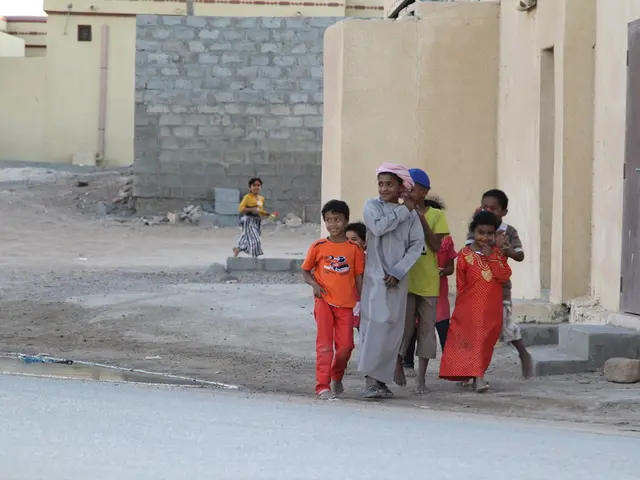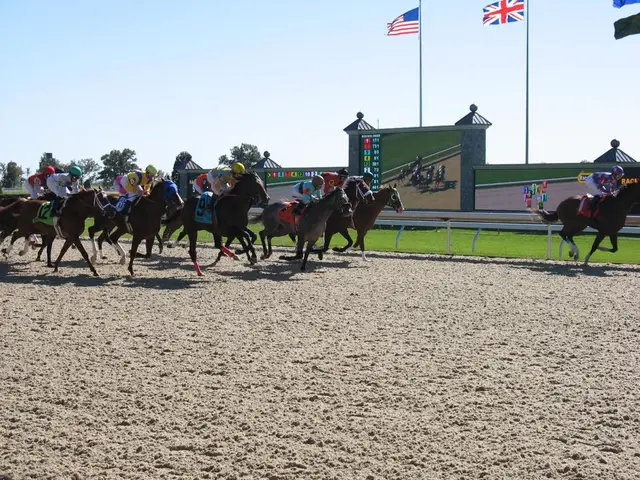Reduced Amazon Rainforest expanse equal to Spain's total area
The Brazilian Amazon, a vast and critical ecosystem, has been facing an accelerated deforestation crisis over the past four decades. According to recent data, over 1.2 million square kilometers of the Amazon's original forest cover have been lost, an area larger than Spain, representing a loss of more than 17% of the Amazon's original forest cover [1]. This alarming trend has led to a shrinkage of about 52.1 million hectares (13%) of the Amazon's natural areas during the same period [2].
The primary driver behind this deforestation is industrial agriculture, particularly the expansion of cattle grazing and soybean farming [1]. Illegal logging and land grabbing, often facilitated by infrastructure development such as roads and dams, further exacerbate forest degradation by opening new areas for exploitation [1]. Recent years have also seen record wildfires and droughts that dry out the forest and increase vulnerability, linked to climate change impacts and forest fragmentation [4].
The consequences of this deforestation are far-reaching and severe. Scientists warn of a tipping point beyond which the Amazon could shift irreversibly to a degraded savannah-like state, losing much of its current rainforest ecosystem by the end of this century if current trends continue [1][4]. This crisis contributes to biodiversity collapse, carbon emissions, and climate feedback loops that threaten the forest's stability [1].
In 2024, the Amazon faced record droughts and wildfires, worsening carbon emissions and accelerating climate change effects [4][5]. However, there have been some temporary decreases in deforested area, such as a 21% drop in 2023 compared to the previous year [3]. The Brazilian government under President Lula da Silva has attempted to balance development and environmental concerns by vetoing parts of the 2025 devastation bill to maintain protections for Indigenous and vulnerable communities [5].
Ongoing scientific monitoring by institutions like Brazil’s National Institute for Space Research (INPE) coupled with platforms such as MapBiomas aids transparency and informs policy efforts [1][2]. The reduced moisture in the Pantanal, the world's largest wetland, favors devastating wildfires [6]. The Pantanal experienced a decrease in flood cycles with each decade and peaked as the driest year in the last 40 years in 2024 [6].
As the world prepares for the World Climate Conference COP30 in November in Belém, the Amazon region, the focus will be on topics such as climate protection and deforestation [7]. Without a profound shift in land-use policies, enforcement, and international cooperation, experts warn that deforestation and degradation will continue to threaten the Amazon’s long-term survival and its global climate regulation role [1][4]. President Luiz Inácio Lula da Silva has pledged "zero deforestation" for Brazil by 2030 [8].
In the Cerrado, Brazil's savannas in the southeast, about 40 million hectares of natural vegetation have been cleared in the four decades, corresponding to a decrease of 28 percent [9]. Since 1985, natural areas larger than Spain have disappeared in the Brazilian Amazon [10]. The share of natural areas in Brazil fell from 80% in 1985 to 65% in 2024 [11].
The MapBiomas initiative, consisting of universities, non-governmental organizations, and technology companies, conducted the analysis [1]. COP30 is scheduled to address environmental concerns, with a focus on climate protection and deforestation, in Belém, the Amazon region, in November [7]. The conference will provide a crucial platform for discussions on the urgent need to address the deforestation crisis in the Amazon and Cerrado regions of Brazil.
References:
[1] MapBiomas. (2022). Analysis of Amazon Deforestation and Land Use Change from 1985 to 2021
[2] MapBiomas. (2022). Analysis of Amazon Deforestation and Land Use Change from 1985 to 2021 - Methodology
[3] MapBiomas. (2023). Analysis of Amazon Deforestation and Land Use Change from 2022
[4] WWF. (2021). Amazon Drought and Fires 2021
[5] BBC. (2021). Brazil's Amazon: Record wildfires in 2021
[6] Mongabay. (2022). Pantanal drought: Brazil's wetland faces worst dry spell in 40 years
[7] COP30. (2022). COP30: The United Nations Climate Change Conference
[8] BBC. (2022). Brazil: Lula pledges 'zero deforestation' by 2030
[9] MapBiomas. (2022). Analysis of Cerrado Deforestation and Land Use Change from 1985 to 2021
[10] MapBiomas. (2022). Analysis of Amazon Deforestation and Land Use Change from 1985 to 2021
[11] MapBiomas. (2022). Analysis of Brazil's Land Use Change from 1985 to 2021
- Enforcing stricter employment policies in industries such as logging, agriculture, and infrastructure development could help curb illegal activities, reducing deforestation in the Amazon.
- Given the critical role of the Amazon in global climate regulation, environmental-science policies must be prioritized in policy-and-legislation discussions at international conferences like COP30.
- To address the long-term survival of the Amazon and the Cerrado, the science community should collaborate with governments and other stakeholders to develop comprehensive employment and community policies that balance economic development with environmental protection.







